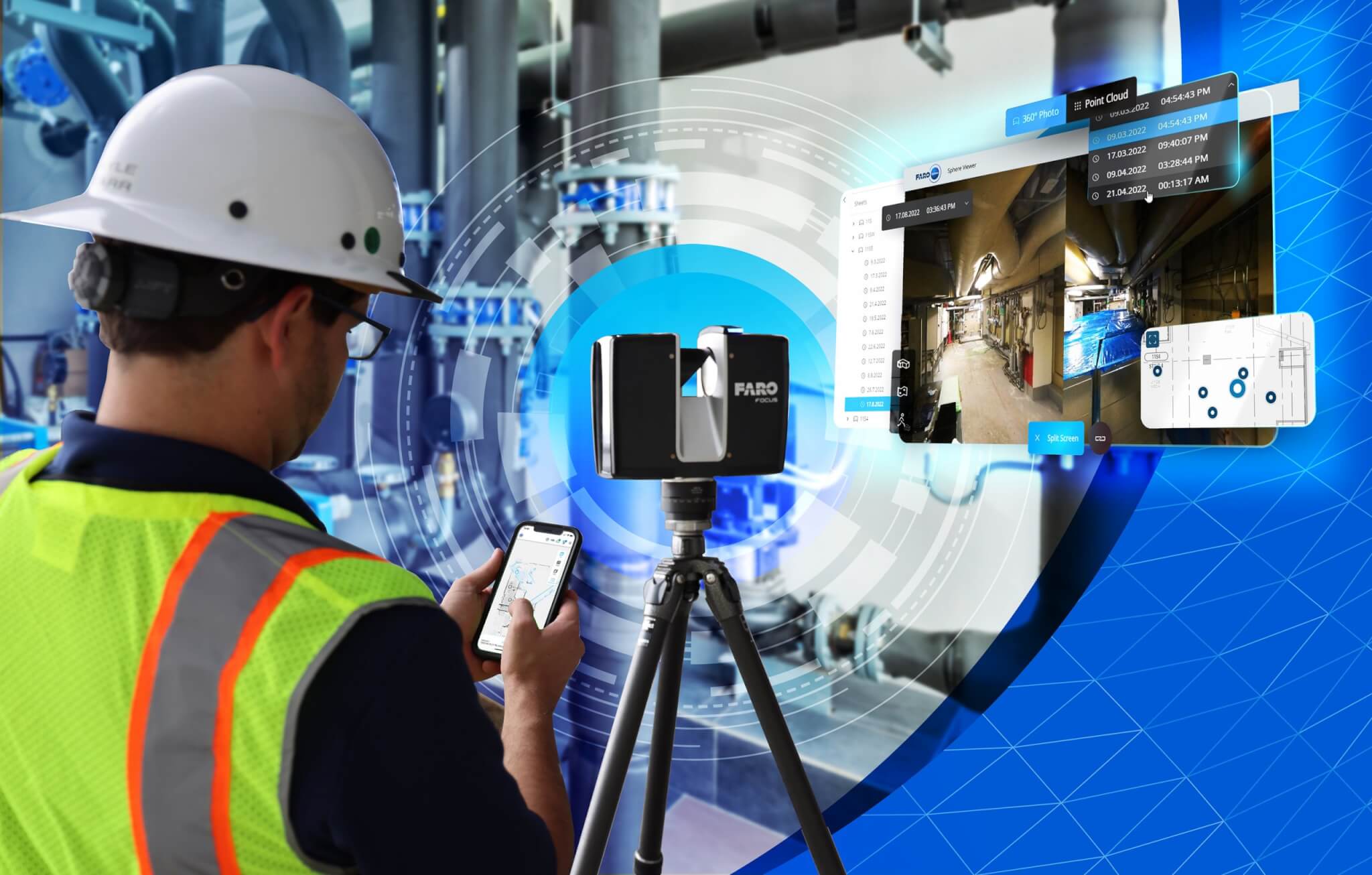
It is clear that artificial intelligence (AI) is advancing fast and coming into everyday use. In the near-future, AI systems will be paired with established technology, such as 3D laser scanning for mechanical, electrical, and plumbing (MEP) applications. What many do not appreciate is that AI is still largely only as good as the quality of data fed into the system, either by human operators or through technology that gathers and organizes information, such as 3D laser scanners and cloud-based data platforms.
As MEP professionals know, whether you’re constructing something new or completing a redesign of a building for repurpose, enhancement, or maintenance, the success and timeline of an entire project rely on accurate and comprehensive data of the site. Any inaccuracies or clashes in MEP installation can lead to unnecessary rework, higher costs, and a subpar final result. 3D capture technology ensures that MEP designs are accurate and that piping, plumbing, and ductwork for HVAC fit narrow spaces with tight tolerances. Only once these data are captured and shared can sophisticated AI software like that currently being developed do its job.
See the sidebar, Successful Scanning, to learn more about 3D capture improves the accuracy of data.
So once you have accurate 3D data collected, organized, and shared, where does AI fit in?
AI for MEP can be useful in two ways. First AI is excellent for culling data and recognizing patterns. Every MEP system is different, so how can you determine that one design or set of designs is superior—for example, more energy-efficient because it requires less piping? AI has the potential to rapidly review thousands of MEP projects and identify the best, most energy-efficient solutions. AI can also be used to look at factors such as cost-effectiveness and strategic implementation.
AI can also be used for project management. AI can monitor, collect, control, evaluate, and manage energy consumption in relation to MEP needs across an entire building or set of buildings. AI can be useful in long-term energy management system planning, of which MEP is an essential component. It can also analyze processes to highlight the need for changes in the MEP design and suggest solutions.
MEP installation stands to benefit from the near-term union of AI, 3D laser scanning, and humans working together: 3D scanning and human operators capture and input data, and AI assists in identifying enhanced efficiencies and informing long-term energy system management. AI continues to evolve, and tomorrow’s AI could far surpass our expectations. The contracting industry should think now about possible applications and the guidelines needed to maximize the potential of AI.
For more information, visit www.faro.com.
Sidebar: Successful Scanning
Working with 3D laser scanning hardware and software solutions, such as the ones developed by FARO Technologies, Inc., offers several immediate advantages by ensuring accurate data capture:
- Faster installation verification. Instead of relying on cumbersome manual measurement, 3D reality capture devices verify the built environment (which includes MEP) with greater accuracy and in a fraction of the time, while accompanying software makes it easy to convert raw data into tangible information.
- Enhanced as-built-to-building information modeling (BIM) comparison. With 3D laser scanning and construction software, you can compare the installation of the MEP components to the BIM output and identify accurate MEP placement.
- Simplify data organization and project collaboration. Increasingly, the technology enables secure sharing of all data with project stakeholders from anywhere in the world, reducing the risk of miscommunications or misunderstandings.
- More accuracy for retrofit and remodel projects. With most retrofits, you must determine how much you can rely on the original design documentation. The latest scan-to-BIM technology ensures that the as-built 3D replica represents what actually exists.


